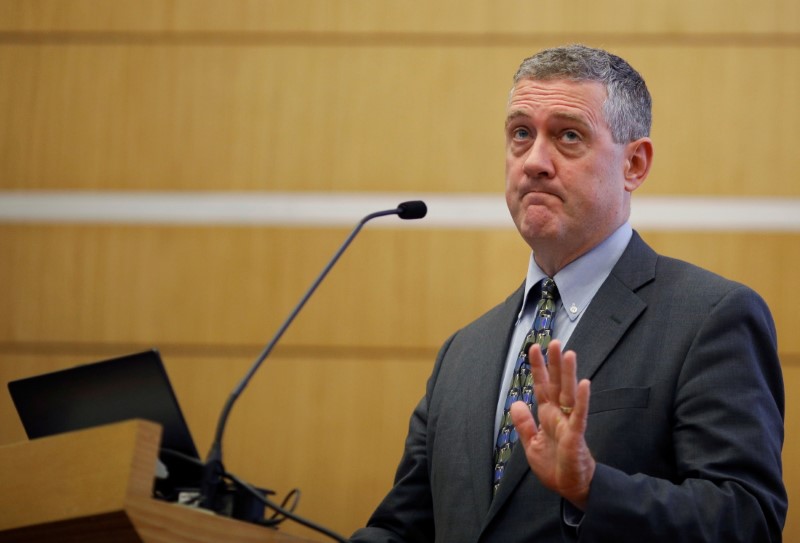(Reuters) - The coming reduction in the Federal Reserve's bond purchases may bear little resemblance to the "automatic pilot" tapering exercise the U.S. central bank conducted seven years ago, as officials grapple with volatile data - on inflation in particular - during the rebound from the COVID-19 pandemic, a Fed official said on Friday.
"In the 2013-2014 taper we went on automatic pilot and didn't do much," St. Louis Fed President James Bullard said in an interview on CNBC.
"This time around, I mean look at this data," he said. "Look at how outsized all these numbers are and how volatile everything has been. I think we're going to have to be more state-contigent than we have been in the past."
The Fed currently holds nearly $7.5 trillion of Treasuries and mortgage-backed securities (MBS) within its $8.1 trillion balance sheet and is adding to those holdings at a rate of $80 billion and $40 billion, respectively, each month as part of its extraordinary measures to support the economy during the pandemic.
At a two-day policy meeting this week, Fed officials opened a dialogue about when and how to slow - or taper - those purchases as the economy recovers and inflation runs above the central bank's 2% target.
Bullard, who also told CNBC that he was among seven Fed policymakers to predict a first rate hike in 2022, is not only eyeing a less steady-as-it-goes approach to the taper this time around. He said he might favor also a more rapid reduction in MBS purchases in the face of a housing boom that could evolve into a "threatening housing bubble."
"I'm leaning a little bit toward the idea that maybe we don't need to be in mortgage-backed securities with a booming housing market and even a threatening housing bubble here, according to some people," he said, echoing concerns raised by some other Fed officials, such as Dallas Fed President Robert Kaplan. "So we don't want to get back in the housing bubble game. That caused us a lot of distress in the 2000s."
"Some people argue that there's not much difference between MBS and Treasuries anyway, so there's no reason to go one way or the other," Bullard said. "But I would be a little bit concerned about feeding into the housing froth that seems to be developing."
'READY TO MAKE ADJUSTMENTS'
Bullard, who becomes a voting member of the policy-setting Federal Open Market Committee next year, predicted a "healthy debate" in coming meetings as officials devise and announce their plan. Should the taper play out as Bullard described, it would mark a notable departure from the Fed's script last time.
Then, after formally announcing its plan at its December 2013, meeting, the central bank cut its then-monthly purchases of $45 billion of Treasuries and $40 billion of MBS by $5 billion each at each ensuing meeting, wrapping up the wind-down by the end of October 2014. While it said the reductions were not on a pre-set course, it never once deviated from that path.
"In 2014, we really didn't have to exercise that option, but this is a situation where we might have to exercise the option," Bullard said. "You don't really know where inflation's going to go here, even the economy as a whole."

Moreover, the rest of the world's economies in 2022 are likely to follow the United States in their emergence from the global recession triggered by the coronavirus pandemic, "possibly booming the way the U.S. is today," he said.
"We'll see if all that develops. But I think we have to be ready to make adjustments as necessary as we go along this path."